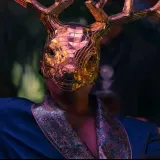Case File #031: The Pollock Twins – Reincarnation or Coincidence?
- Status: Unresolved – Reincarnation Hypothesis
- Date Filed: May 5, 1957
- Last Reviewed: June 8, 2025
- Location: Hexham, Northumberland, England
- Subjects: Joanna Pollock (11), Jacqueline Pollock (6) – Deceased
Jennifer Pollock & Gillian Pollock – Twin Sisters Born 1958 - Filed Under: Reincarnation – Psychological Anomaly – Paranormal Studies
- Access Level: Public
Introduction: Two Lives That Refused to End
In 1957, a tragic car accident claimed the lives of two sisters in the small English town of Hexham. Joanna Pollock, aged 11, and her younger sister Jacqueline, aged 6, were struck and killed by a car while walking to church. The grief was immense for their parents, Florence and John Pollock.
A year later, Florence gave birth to twin girls—Jennifer and Gillian. What followed in the coming years led many to believe that the Pollock twins were not just daughters born after tragedy, but reincarnations of the sisters who died.
The Accident: Sudden and Devastating
On May 5, 1957, a local woman under the influence of barbiturates struck the two sisters with her vehicle. Witnesses said the car veered onto the sidewalk, killing Joanna instantly and severely injuring Jacqueline, who died shortly after. The driver had previously lost custody of her children and was in psychological distress.
Their deaths left an emotional crater in the family. John, the father, began reading deeply into religious and spiritual literature, including works on reincarnation—something his wife Florence rejected.
The Birth of the Twins
On October 4, 1958, Florence gave birth to identical twin girls. The Pollocks were not aware of any history of twins in either family line, making the occurrence statistically rare. Yet what truly puzzled them—and later researchers—were the behavioral patterns and physical similarities the twins began to exhibit as they grew.
Jennifer had a birthmark on her waist, almost identical in location to a scar Jacqueline had. Another mark on Jennifer’s forehead resembled a scar Jacqueline had sustained during a fall.
Behavioral Similarities
As early as age two, the twins began asking for toys that had belonged to Joanna and Jacqueline—without ever being shown these items beforehand. When the family moved back to Hexham when the twins were four, they pointed out landmarks they had never seen before. “That’s the school we went to,” one of them reportedly said, referring to the school Joanna had attended.
Florence also claimed that the girls displayed distinct personalities that matched the deceased sisters. Gillian was more mature and nurturing, like Joanna had been. Jennifer was more dependent and attached to her mother, mirroring Jacqueline.
The Death Memory Incident
The most unsettling moment occurred during a game. The twins were playing on the floor when Jennifer suddenly laid down and held her head, saying, “The blood’s coming out of my eyes. That’s where the car hit me.”
Gillian comforted her, placing her hand on Jennifer’s back, saying, “It didn’t hurt much.” Their parents overheard the exchange, stunned.
Both girls reportedly had recurring nightmares involving cars and accidents between ages three and seven. After the age of eight, these memories began to fade.
Scientific Involvement
Dr. Ian Stevenson, a psychiatrist from the University of Virginia, took deep interest in the Pollock case. He visited the family, interviewed the children, and cross-referenced their statements with known facts. In his analysis, he documented over 30 similarities between the twins and their deceased sisters.
Stevenson included the Pollock twins in his broader study of over 2,500 cases of children who claimed to remember past lives. He considered their case one of the most compelling due to the combination of physical markings, behavioral evidence, and detailed memory accounts.
Skepticism and Counterarguments
Skeptics argue that the twins’ behavior could be explained by suggestion or unconscious reinforcement by the parents. Critics suggest that children are highly impressionable and that the Pollocks may have unconsciously encouraged similarities.
Psychologists note that memory implantation, even unintentionally, is possible through repeated stories or emotional expectations. Still, some of the statements made by the twins were difficult to dismiss, especially those made before certain objects or places had ever been introduced to them.
Where They Are Now
As adults, Jennifer and Gillian reportedly lost all memories of their “past lives.” They led normal lives and expressed no belief in reincarnation themselves. Their parents, especially John, remained convinced until their deaths that their daughters had returned.
Conclusion: Beyond Explanation
The Pollock Twins case remains one of the most intriguing and controversial examples in reincarnation research. It straddles the boundary between science and the unknown. Whether seen as a compelling coincidence, a case of parental projection, or genuine evidence of past-life memories, it continues to puzzle researchers, challenge belief systems, and stir the imagination.
References
All sources used in this case are listed in the References Archive. Each link corresponds to verified data, public records, or expert documentation.

